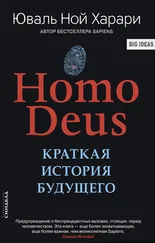People in medieval Europe had great respect for ancient imperial decrees. They strongly believed that kings and emperors were God’s representatives, and they also believed that the older the document, the more authority it carried. Constantine in particular was revered, because he turned the Roman Empire from a pagan realm into a Christian empire. In a clash between the desires of some present-day city council and a decree issued by the great Constantine himself, it was obvious that people ought to obey the ancient document. Hence whenever the Pope faced political opposition, he waved the Donation of Constantine, demanding obedience. Not that it always worked. But the Donation of Constantine was an important cornerstone of papal propaganda and of the medieval political order.
When we examine the Donation of Constantine closely, we find that this story is composed of three distinct parts:
Ethical judgement
Factual statement
Practical guideline
People ought to respect ancient imperial decrees more than present-day popular opinions.
On 30 March 315, Emperor Constantine granted the popes dominion over Europe.
Europeans in 1315 ought to obey the Pope’s commands.
The ethical authority of ancient imperial decrees is far from self-evident. Most twenty-first-century Europeans think that the wishes of present-day citizens trump the diktats of long-dead kings. However, science cannot join this ethical debate, because no experiment or equation can decide the matter. If a modern-day scientist time-travelled to medieval Europe, she couldn’t prove to our ancestors that the decrees of ancient emperors are irrelevant to contemporary political disputes.
Yet the story of Constantine’s Donation was based not just on ethical judgements. It also involved some very concrete factual statements, which science is highly qualified to either verify or falsify. In 1441 Lorenzo Valla – a Catholic priest and a pioneer linguist – published a scientific study proving that Constantine’s Donation was forged. Valla analysed the style and grammar of the document, and the various words and terms it contained. He showed that the document included words which were unknown in fourth-century Latin, and that it was most probably forged about 400 years after Constantine’s death. Moreover, the date appearing on the document is ‘30 March, in the year Constantine was consul for the fourth time, and Gallicanus was consul for the first time’. In the Roman Empire, two consuls were elected each year, and it was customary to date documents by their consulate years. Unfortunately, Constantine’s fourth consulate was in 315, whereas Gallicanus was elected consul for the first time only in 317. If this all-important document was indeed composed in Constantine’s days, it would never have contained such a blatant mistake. It is as if Thomas Jefferson and his colleagues had dated the American Declaration of Independence 34 July 1776.
Today all historians agree that the Donation of Constantine was forged in the papal court sometime in the eighth century. Even though Valla never disputed the moral authority of ancient imperial decrees, his scientific study did undermine the practical guideline that Europeans must obey the Pope. 3
On 20 December 2013 the Ugandan parliament passed the Anti-Homosexuality Act, which criminalised homosexual activities, penalising some activities by life imprisonment. It was inspired and supported by evangelical Christian groups, which maintain that God prohibits homosexuality. As proof, they quote Leviticus 18:22 (‘Do not have sexual relations with a man as one does with a woman; that is detestable’) and Leviticus 20:13 (‘If a man has sexual relations with a man as one does with a woman, both of them have done what is detestable. They are to be put to death; their blood will be on their own heads’). In previous centuries, the same religious story was responsible for tormenting millions of people all over the world. This story can be briefly summarised as follows:
Ethical judgement
Factual statement
Practical guideline
Humans ought to obey God’s commands.
About 3,000 years ago God commanded humans to avoid homosexual activities.
People should avoid homosexual activities.
Is the story true? Scientists cannot argue with the judgement that humans ought to obey God. Personally, you may dispute it. You may believe that human rights trump divine authority, and if God orders us to violate human rights, we shouldn’t listen to Him. Yet there is no scientific experiment that can decide this issue.
In contrast, science has a lot to say about the factual statement that 3,000 years ago the Creator of the Universe commanded members of the Homo sapiens species to abstain from boy-on-boy action. How do we know this statement is true? Examining the relevant literature reveals that though this statement is repeated in millions of books, articles and Internet sites, they all rely on a single source: the Bible. If so, a scientist would ask, who composed the Bible, and when? Note that this is a factual question, not a question of values. Devout Jews and Christians say that at least the book of Leviticus was dictated by God to Moses on Mount Sinai, and from that moment onwards not a single letter was either added or deleted from it. ‘But,’ the scientist would insist, ‘how can we be sure of that? After all, the Pope argued that the Donation of Constantine was composed by Constantine himself in the fourth century, when in fact it was forged 400 years later by the Pope’s own clerks.’
We can now use an entire arsenal of scientific methods to determine who composed the Bible, and when. Scientists have been doing exactly that for more than a century, and if you are interested, you can read whole books about their findings. To cut a long story short, most peer-reviewed scientific studies agree that the Bible is a collection of numerous different texts composed by different people in different times, and that these texts were not assembled into a single holy book until long after biblical times. For example, whereas King David probably lived around 1000 BC, it is commonly accepted that the book of Deuteronomy was composed in the court of King Josiah of Judah, sometime around 620 BC, as part of a propaganda campaign aimed to strengthen Josiah’s authority. Leviticus was compiled at an even later date, no earlier than 500 BC.
As for the idea that the ancient Jews carefully preserved the biblical text, without adding or subtracting anything, scientists point out that biblical Judaism was not a scripture-based religion at all. Rather, it was a typical Iron Age cult, similar to many of its Middle Eastern neighbours. It had no synagogues, yeshivas, rabbis – or even a bible. Instead it had elaborate temple rituals, most of which involved sacrificing animals to a jealous sky god so that he would bless his people with seasonal rains and military victories. Its religious elite consisted of priestly families, who owed everything to birth, and nothing to intellectual prowess. The mostly illiterate priests were busy with the temple ceremonies, and had little time for writing or studying any scriptures.
During the Second Temple period a rival religious elite was formed. Due partly to Persian and Greek influences, Jewish scholars who wrote and interpreted texts gained increasing prominence. These scholars eventually came to be known as rabbis, and the texts they compiled were christened ‘the Bible’. Rabbinical authority rested on individual intellectual abilities rather than on birth. The clash between the new literate elite and the old priestly families was inevitable. Luckily for the rabbis, the Romans torched Jerusalem and its temple while suppressing the Great Jewish Revolt (AD 70). With the temple in ruins, the priestly families lost their religious authority, their economic power base and their very raison d’être . Traditional Judaism – a Judaism of temples, priests and head-splitting warriors – disappeared. Its place was taken by a new Judaism of books, rabbis and hair-splitting scholars. The scholars’ main forte was interpretation. They used this ability not only to explain how an almighty God allowed His temple to be destroyed, but also to bridge the immense gaps between the old Judaism described in biblical stories and the very different Judaism they created. 4
Читать дальше
Конец ознакомительного отрывка
Купить книгу












